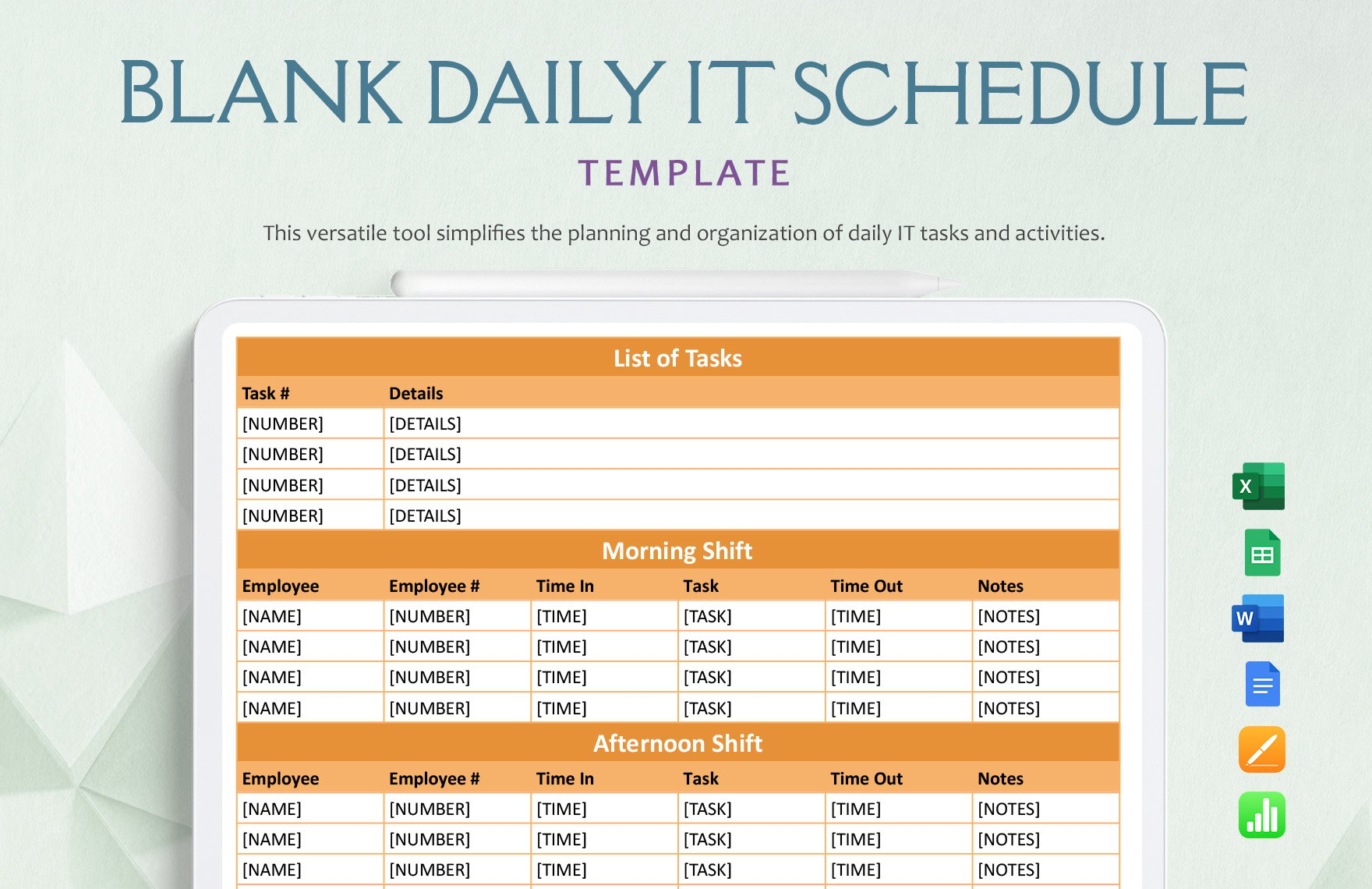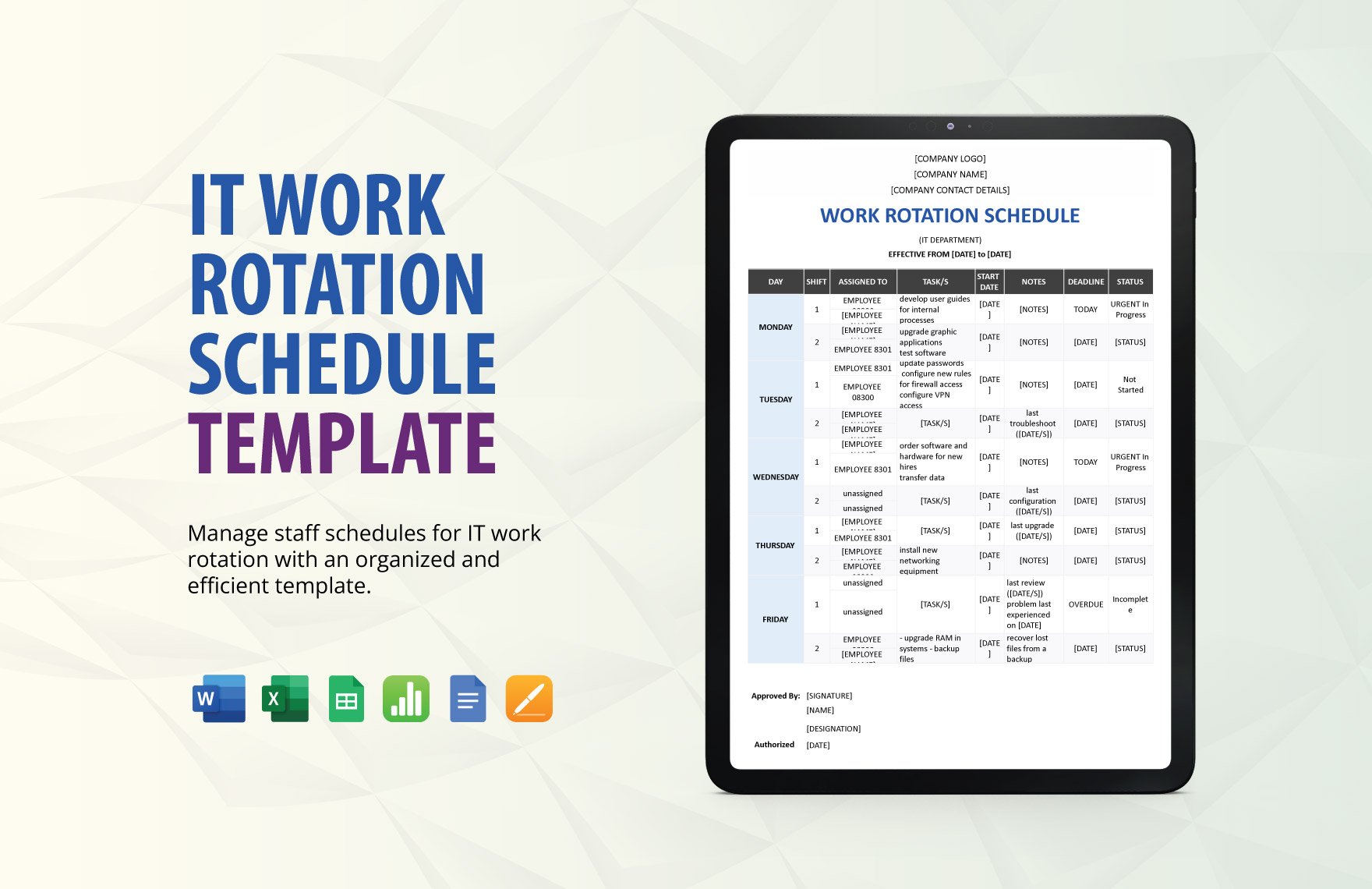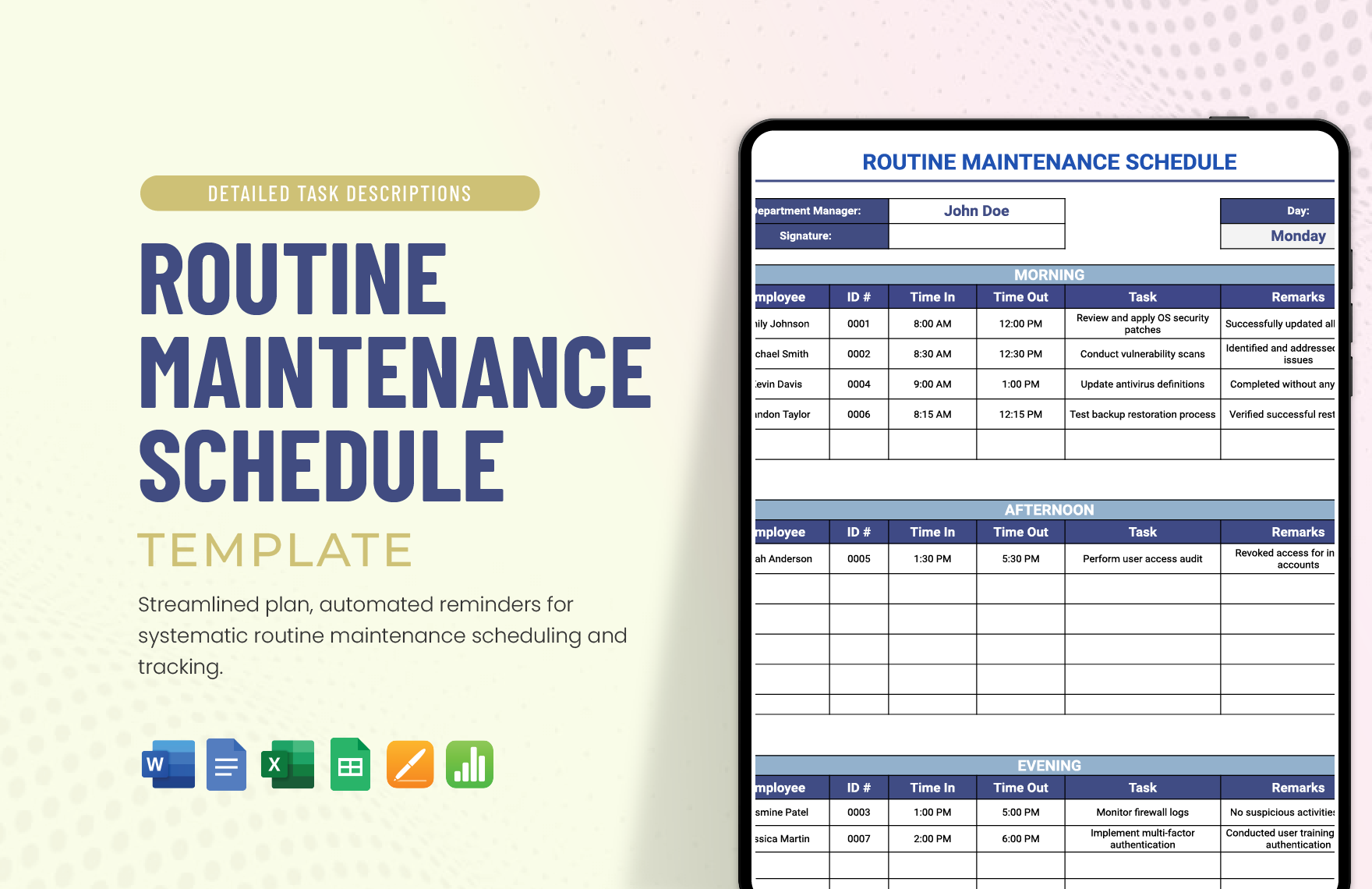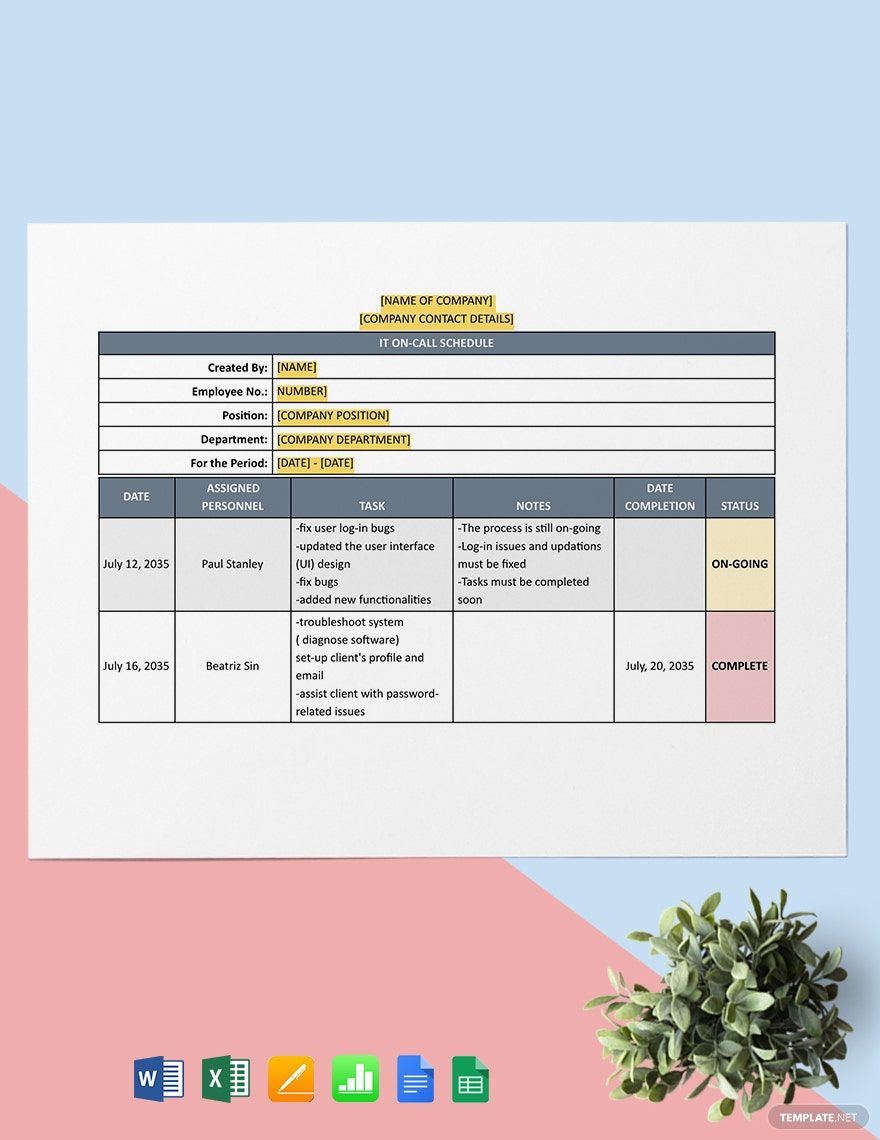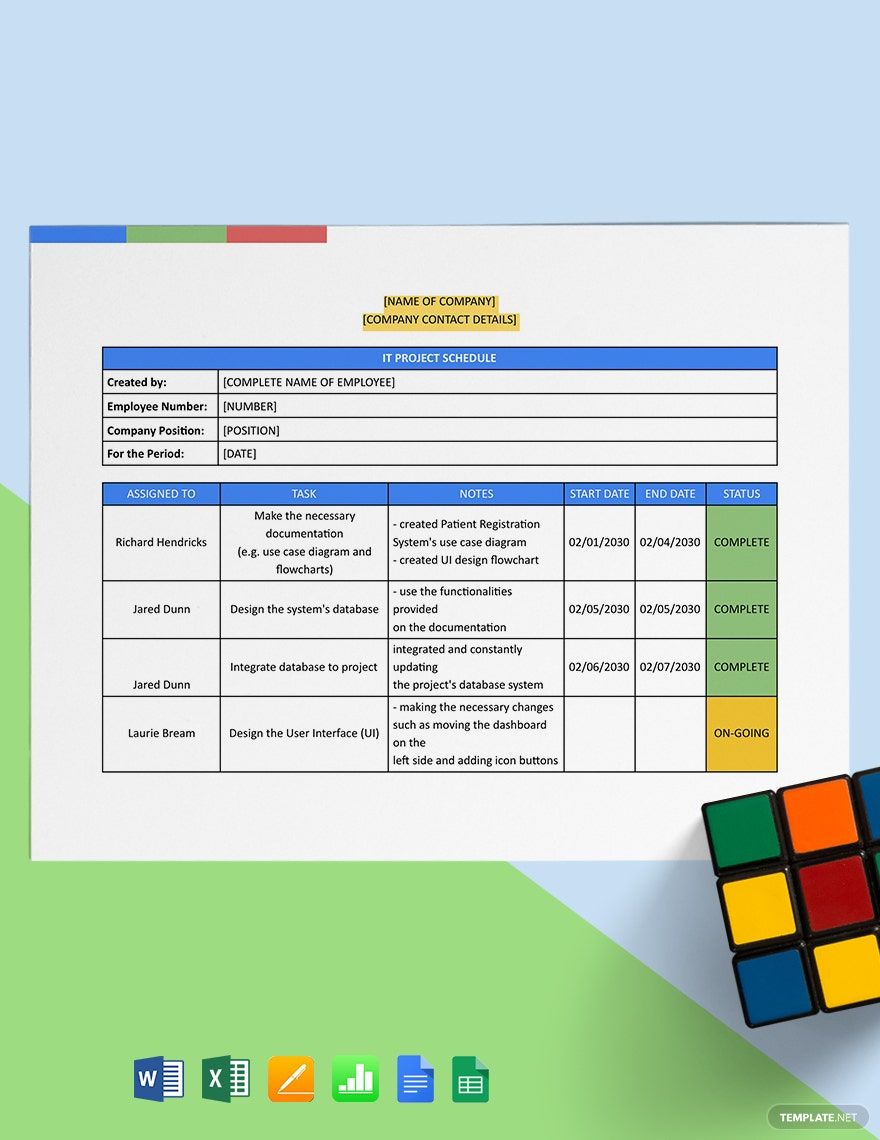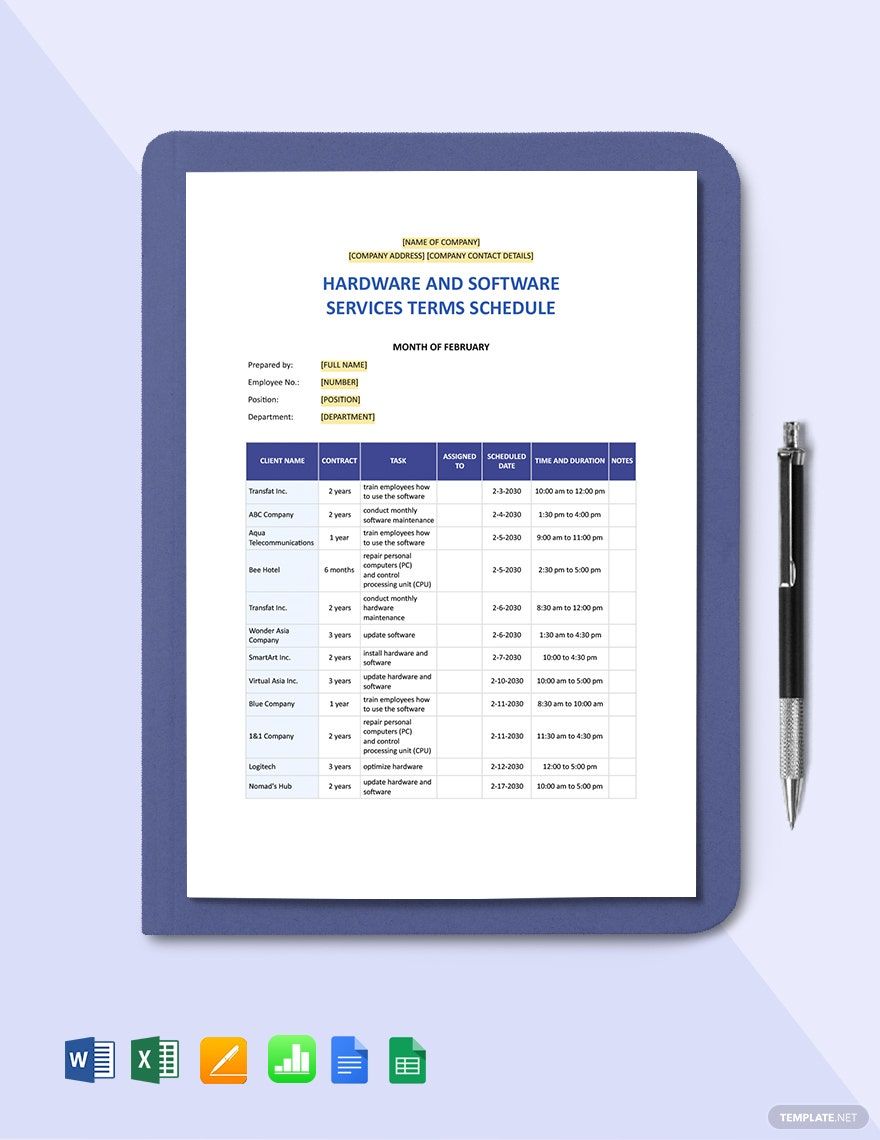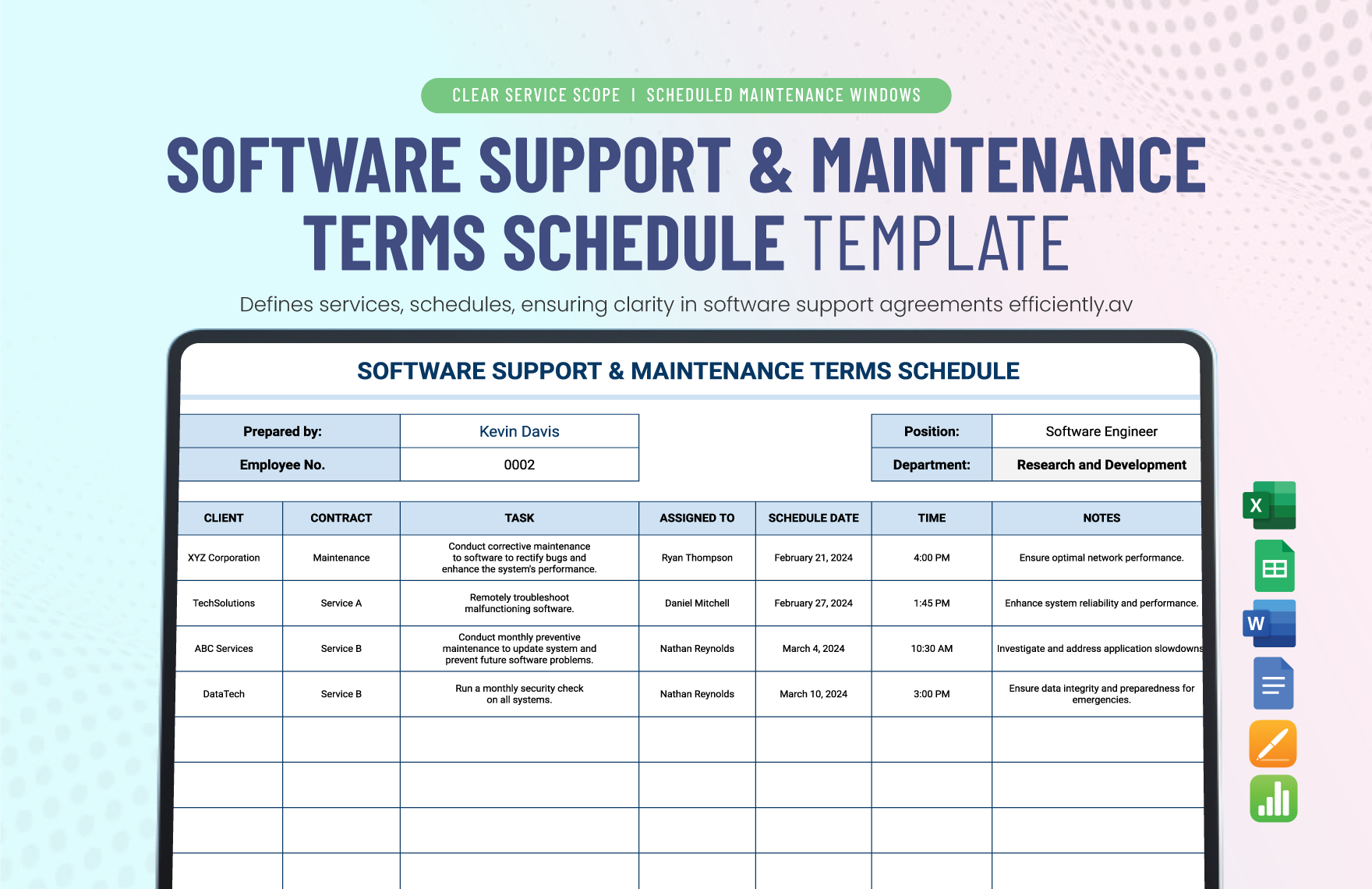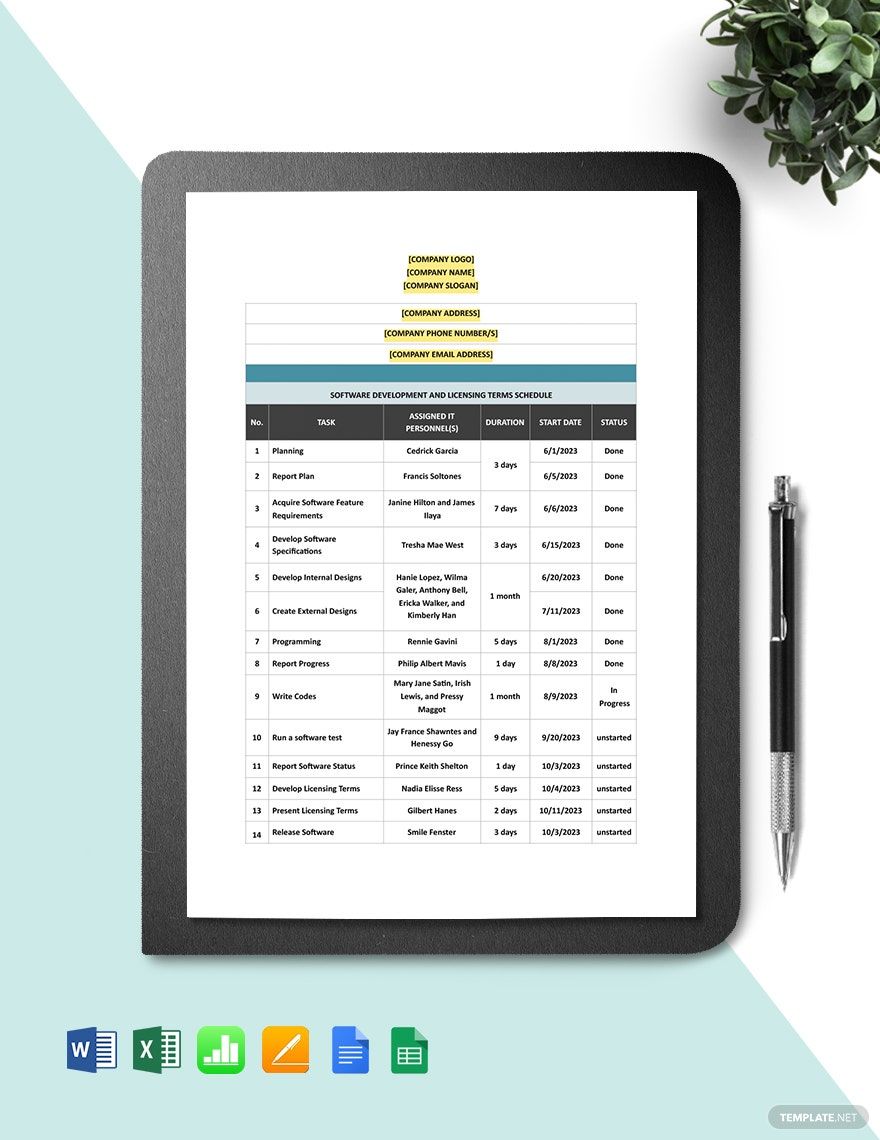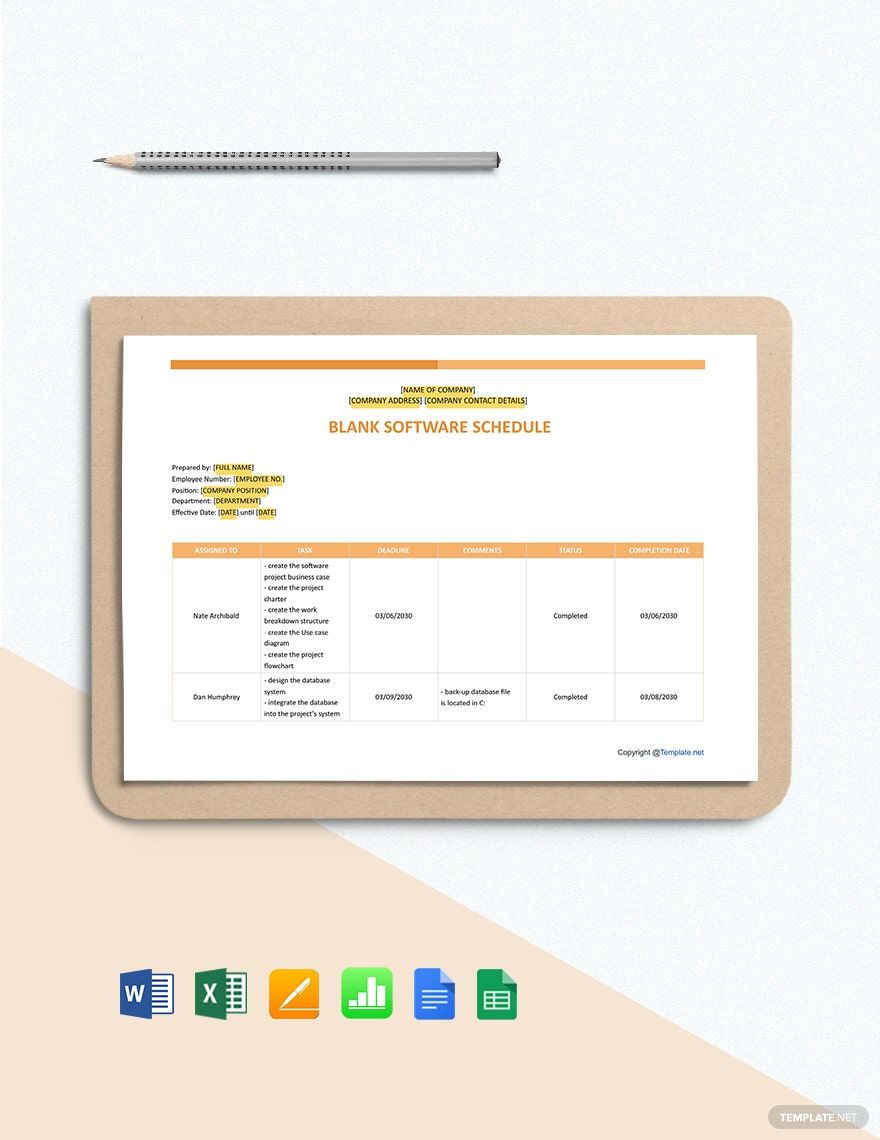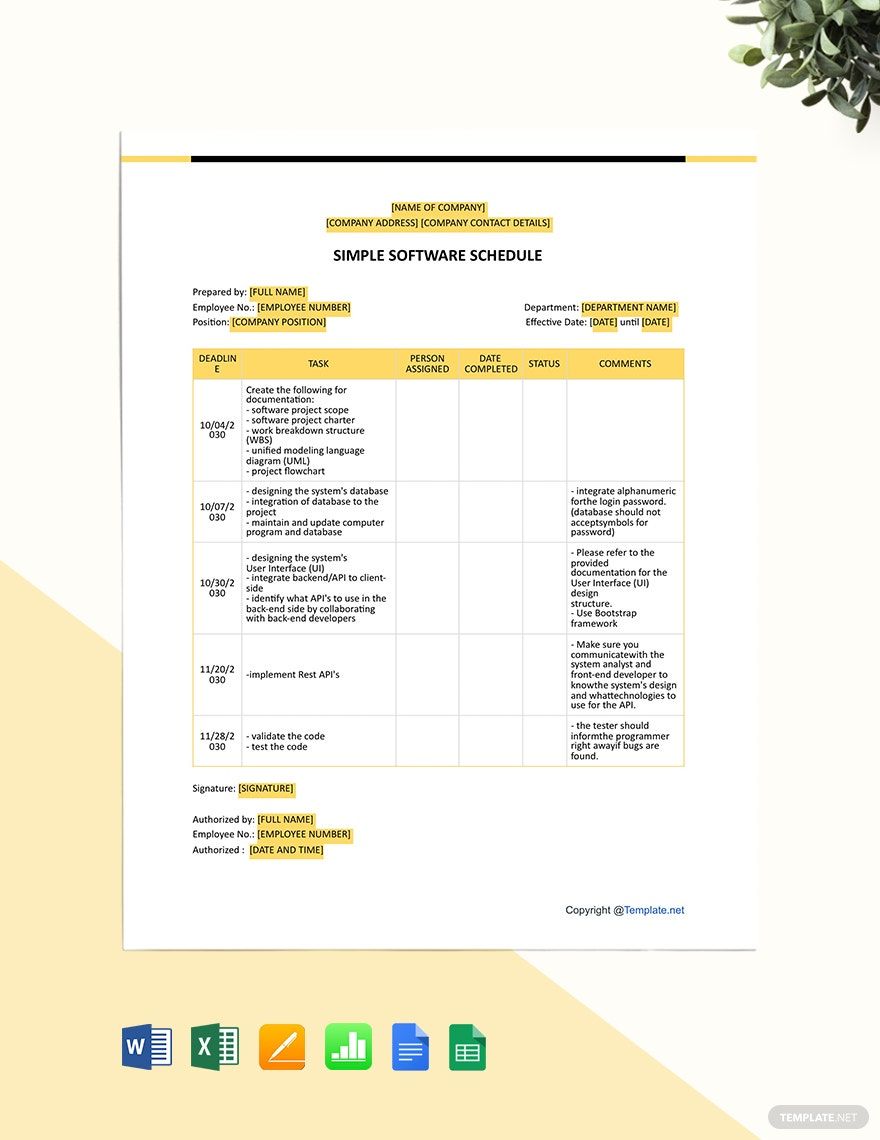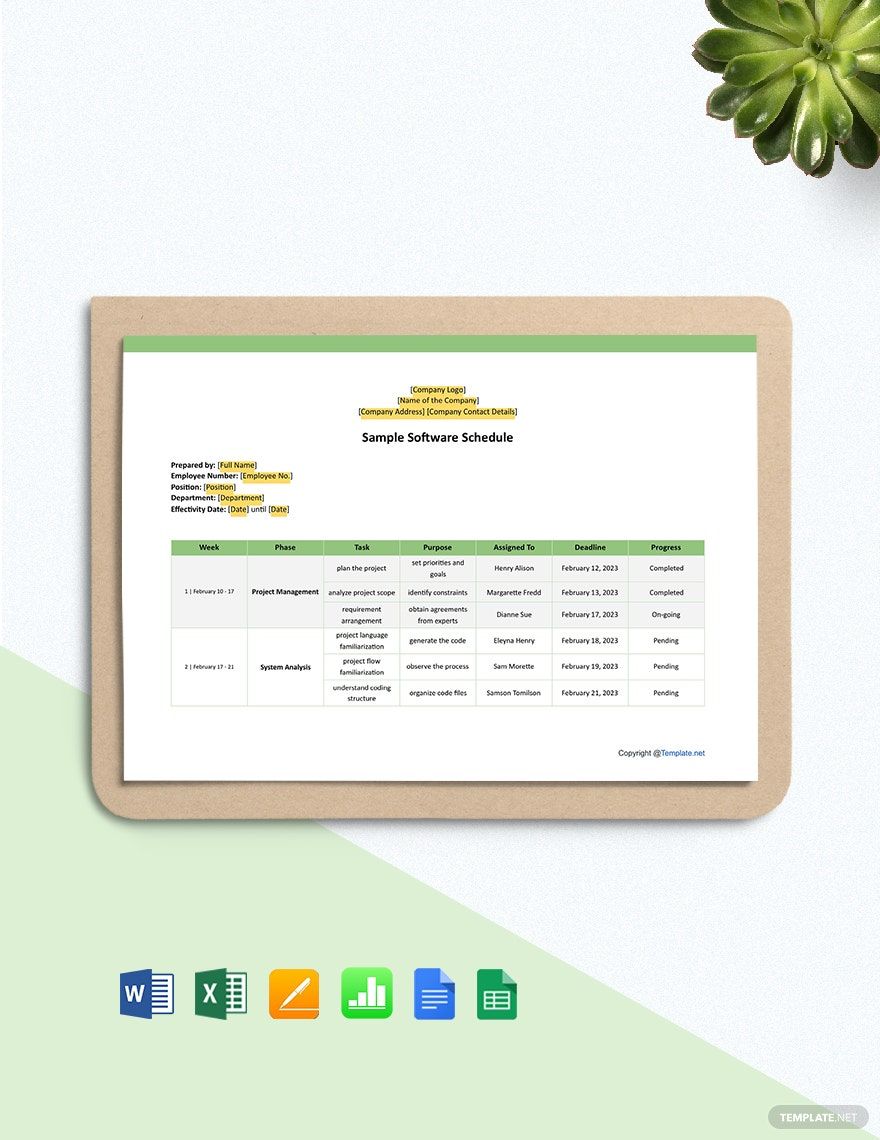The IT industry is a fast-tracked environment. Any roadblocks that hinder processes that fall under this industry can be costly for both the IT company and its clients. What's even tricky is that most IT-related tasks are time-bound that one task missed can be a deal-breaker between businesses and their clients. That is why in the IT industry, proper time management is highly emphasized. To show that you value your time, create schedules in all of your endeavors using any of our IT and Software Schedule Templates. These templates contain suggestive content that can be conveniently edited in Google Docs. Get things done by downloading any of our templates now!
How to Make an IT and Software Schedule in Google Docs?
In her Entrepreneur article, author, coach, and speaker Katrina Ruth wrote that time is precious, and it should be spent on doing things that give you progress. Such words apply even in the IT industry where time is indeed valuable with all the software development, project management, and production schedule it involves.
One of the things that manifest your value for time is to create a schedule that breaks down how you deal and treat all the time that you have. Should you want to continuously treat time like the limited resource that it already is, then take notes down from the following guidelines on how you can write one.
1. Determine IT Project Action Items
When dealing with IT projects, you should always determine action items in your schedule. Whether you need to define the requirements of your current software project, communicate with the IT project team, or figure out the underlying risks of the project, be sure to determine all of these beforehand. Making a checklist will also help as this will give a better perspective and a definite goal on what to on a particular working day.
2. Avoid Underestimating High-Priority Tasks
Upon determining your tasks every single day, do not miss out on highlighting tasks that you should prioritize. Often, high-priority tasks are interconnected with one another. IT and software projects follow the Software Development Life Cycle (SDLC). The SDLC has seven phases. Each phase consists of high-priority tasks. If the project team does not work on such tasks immediately, it will be impossible for the team to proceed to the next steps and complete the project itself.
3. Incorporate Contingencies
It is typical for IT and software projects to encounter risks. Although risks are always accounted for, it often comes in a surprise and causes delays. So, if you are assigned to plot and lay out the schedule of the project, be sure to include time contingency that will ensure that the team will have enough time to deal with the challenges without resorting to overtime.
4. Schedule Logical Durations
To avoid burnout and to avoid getting disappointed with failed expectations, you and your team must set a realistic schedule. If the testing phase of the project requires more than three days, then set at least four to five days to make room if the team encounters challenges for the day. You should also take into account the workload, and the resources should also be taken into account to ensure the schedule is set reasonably.
